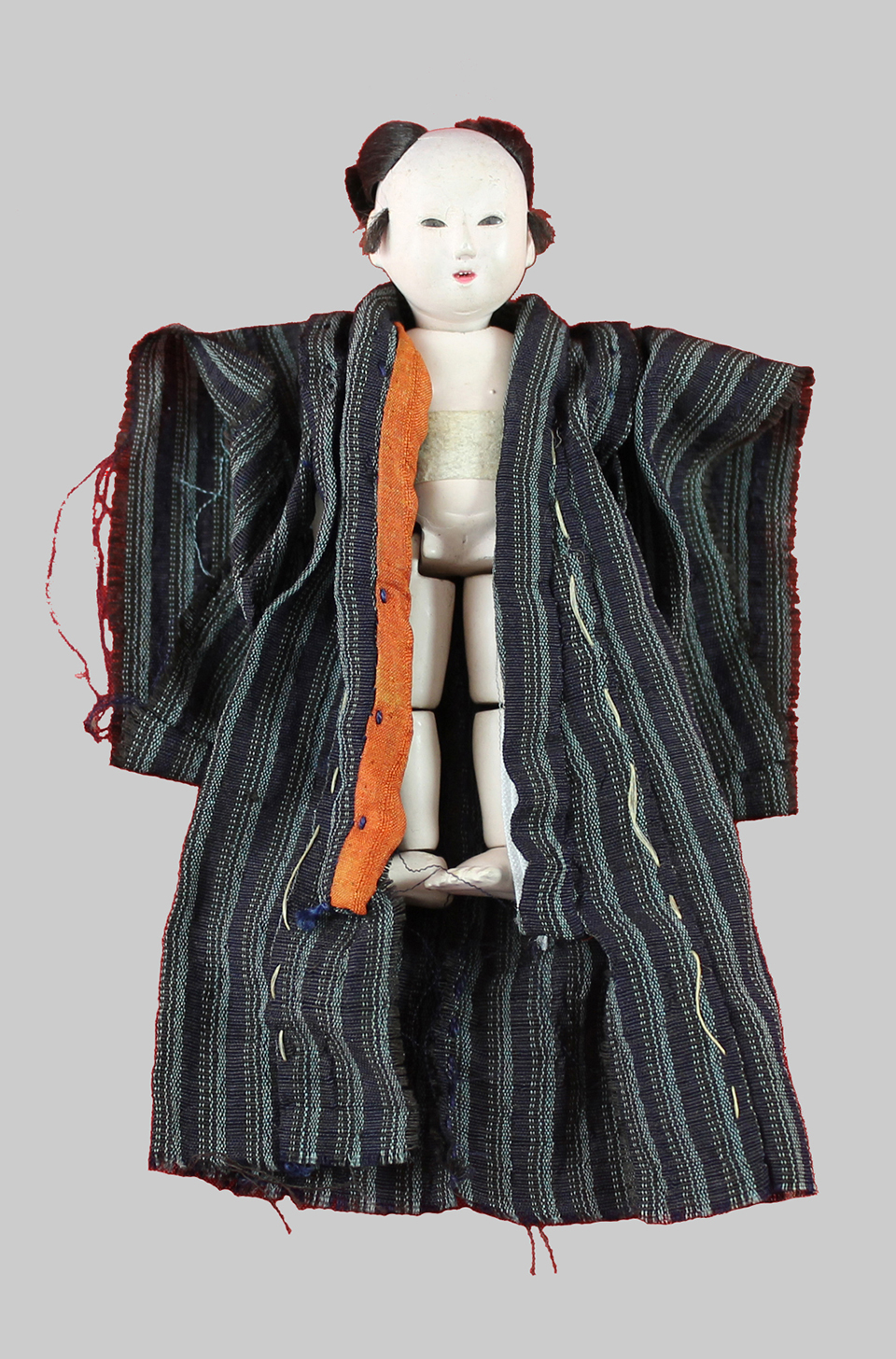
Pictured here is a small Japanese doll, measuring only four inches from head to toe. It features jointed limbs, a silk kimono, inlaid glass eyes, tiny carved teeth and real hair. The doll’s body is made from composition, a mixture of sawdust (probably of Paulownia wood), glue, and possibly other materials. It is covered with gofun, a lacquer made from pulverized oyster shells mixed with traditional Japanese glue. The gofun coating gives the doll its pale color and a pearly sheen.
Japan has a long history of doll making, and there are many different categories of dolls corresponding to various cultural purposes, including dolls connected with specific festivals, dolls for decorative purposes, automated dolls for entertainment, and children’s toys. This doll is of the Mitsuori form, known for their triple jointed construction with articulation at the hip, knees and ankles. The joints allowed the dolls to be naturally posed, such as in a kneeling position, and facilitated changing the dolls’ outfits. They were designed to be “played” with, but not necessarily by children. Produced in the late 18th and early 19th centuries, they were often expensive items that required a high degree of skill to manufacture. Many of these early dolls were made to represent popular actors, with one of the best known and most popular types being named “Ichimatsu” dolls, after popular 18th century kabuki actor Sanogawa Ichimatsu. Based on features of its construction, this doll likely dates to the first half of the 19th century.
This doll belonged to Charles Longfellow, the poet’s eldest child, who visited Japan on three separate occasions, a twenty monthlong stay in 1871 – 1873, and shorter visits in 1885 and 1891. Longfellow collected hundreds of Japanese artifacts during his visits, decorating his sitting room in the family home on Brattle Street to such an extent that in the years after his passing it came to be referred to as the “Japan Room”.
